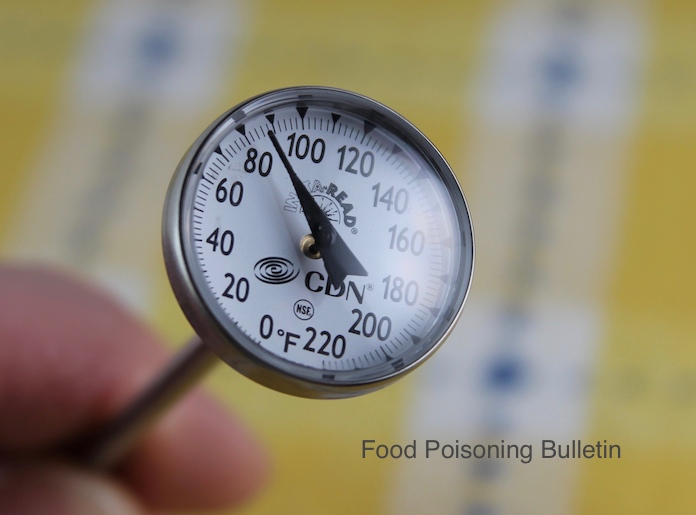Michigan State University has issued a post telling consumers that using a food thermometer is easy and important for your family’s health. Most people don’t use a food thermometer when cooking. Although about 62% of American consumers have a food thermometer in their kitchens, fewer than 10% actually use it.

Any food that contains meat, poultry, fish, or eggs should be tested with a food thermometer before it is eaten to make sure that food has reached a safe final internal temperature. Using a thermometer is the only way to know that your food is thoroughly cooked and that it has reached a temperature that will destroy pathogenic bacteria.
If your family has a member who is in a high risk group for food poisoning, this cooking step is even more important. Those in high risk groups include the elderly, infants, young children, people with compromised immune systems, and those with chronic illnesses such as diabetes. Those people can become seriously ill and even die if they contract a foodborne illness.
Many cooks use indicators of color, firmness, the color of juices, and shrinkage as signs of doneness. Those indicators are not reliable signs of proper doneness, and in fact, sometimes food that is exhibiting these signs can be overcooked and dry. A food thermometer not only makes sure your food is safe, but also that it isn’t overcooked.
There are many types of food thermometers. You can buy an inexpensive thermometer from the grocery store for a few dollars, or invest in a really accurate and reliable thermometer for about a hundred dollars.
Oven safe thermometers can stay in the food as it cooks in the oven or on the grill. Make sure that ou read the label on the thermometer you buy so you know if it can be used in these alliances. Digital or dial instant read thermometers are used when the food has been removed from the heat source. The latter type of thermometer can give a reading in two to ten seconds. The AMI Foundation has prepared a video showing how to use a thermometer to test meats.
Finally, make sure that you know the safe temperatures of food before you cook. USDA has a chart that details the specifics of food temperatures along with rest times. Print it out and tape it to the inside of your pantry door for reference.




